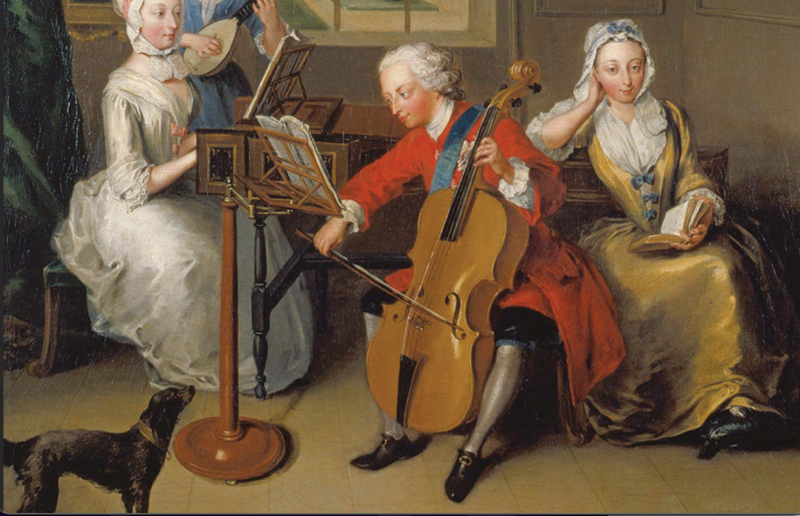Easier
A list

Kuhlau's Sonatinas are great fun and Kuhlau ~ Allegro con spirito (A6) is no exception. The two-part texture should be easy enough to learn at this level. Listen to what Lang Lang has to say about the kind of character in Kuhlau's music:
Paradies ~ Allegro (A8) tumbles along at a moderate pace and gives ready access to an uncomplicated but engaging piece with easy two-part textures.
Scarlatti ~ Sonata in E KP. 380 (A10) provides a great introduction to playing in this style to anyone new to his music. It does not demand a great amount of virtuosity but does need sensitivity and poise in the shaping of its lines and in the phrasing.
_____________________________
B list

Chopin ~ Mazurka in A minor (B1) should be relatively easy to learn as there is quite a bit of repetition of ideas. It's worth remembering that the lento tempo is contextual. In other words, although this is not a fast mazurka, if the tempo dips much below crotchet = 100 it will feel very drawn out.
Jan Freidlin ~ At the Evening Window (B2) is a gentle expressive piece that relies on sensitive use of tonal control and a willingness to engage with plenty of rubato in order for the lines to flow with a suitable momentum and not to become static.
Moszkowski ~ Calme du soir (B3) is one of those pieces which can sound beautiful or plodding, depending on how well the tonal balance is crafted. Float the top note of the right hand melody with a persuasive cantabile whilst keeping the undertow of constant quaver chords well in the background. A feeling for the harmonic direction will help to inform the rubato.
Hensel ~ Melodie Op. 4 No. 2 (B5) is a delightful lyrical piece. Careful, slow practice will be needed to ensure accuracy in the left hand leaps as well as even semiquaver textures that do not disturb the calm, top cantabile line.
A free copy of the score is available here:
https://s9.imslp.org/files/img...
Mendelssohn's Songs Without Words require a generous cantabile treatment to realise the essence of the music. Mendelssohn ~ Song without Words, Op. 19 No. 1 (B8) is a great place to start and an ideal piece to practise projection of right hand tone whilst keeping a quietly bubbling semiquaver accompaniment in the background.
English pianistic music of the early 20th century was often steeped in the English romantic idiom, reminiscent of the beauty of the English countryside, nostalgic in mood. That is definitely seen in the character of Alan Richardson ~ Lento Moderato (B9).
At the end of Schumann's exquisite set of miniatures, Kinderscenen, comes Schumann ~ No 12 (B10). Here the little child is on the verge of falling asleep, a little troubled at first, then smiling inwardly in the more comfortable warmth among the bed sheets. As the music gets slower the child's eyes begin to close and, in a moment, sleep descends.
From another corner of the child's imagination comes Debussy ~ The Little Shepherd (B11). It's an ideal piece to conjure the imagination with the shepherd's slow lyrical pipe tune calling to his flock to join him before he moves on to the next place on the hillside. It requires some careful fingering and pedalling in some places to realise all the detail.
With the theme of sleep still in mind comes Ilinsky ~ Berceuse (B12), a lovely melodic piece in Gb major. It shouldn't be taken too slowly otherwise it will drag, and it is marked Andante.
Russell ~ Jamaican Dance No. 2 (B13) is a simple and effective arrangement of a Jamaican Folk Song. It should be easy enough to learn, with its repetition of ideas and motifs.
_____________________________
C list

Rahbee ~ Prelude: Twilight (C2) provides an opportunity to be expressive and impressionistic. Achieving a pleasant singing tone with good pedalling is a requirement here.
Param Vir ~ White Light Chorale (C3) is an effective bit of piano writing. Whilst the score looks challenging on initial sight, the tempo, marked rubato, is slow enough and the main work to be done is in sorting out what will undoubtedly be unfamiliar harmonies, and ensuring that leger line notes are accurately located.
Although, at first sight, Ginastera ~ Tribute to Roberto Garcia Morillo (C6) appears tricky, there are only two basic musical ideas in this brief, yet stunning, piece. The alternating hands are loud and fast, but in a fixed position. As long as the player can negotiate the ascending and descending right hand flourishes whilst tying in the left hand octaves at speed, this should be a reasonably easy and rewarding piece to play.
The call of the hunting horns characterises Grovlez ~ Chanson du Chasseur (B7). It's a good piece for quick learning and one which can be musically detailed with relative ease too.
Kern ~ Smoke Gets in Your Eyes (C8) is a pleasant arrangement and easy enough to learn. The best starting point would be to listen and get to know some versions of the original song. Dinah Washington's 1955 version is stylish and gives you a good idea of where the music originates:
_____________________________
Other content in “Grade 7”
-
Current: Easier
